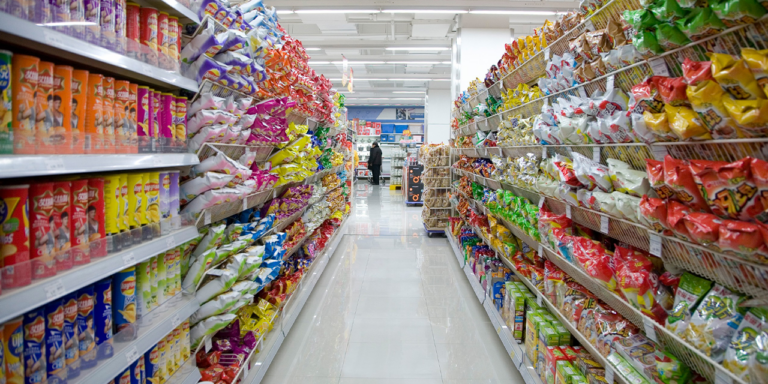Throughout 2020, retailers proved they could adjust quickly when forced to do so. Retailers introduced curbside pickup, fulfilled online orders from closed stores, found new suppliers, adjusted assortments, and partnered with delivery service companies to ramp up online fulfillment at an unprecedented speed. However, in the push to ensure that customers’ needs were met during the pandemic, many retailers had to put securing sales and market share ahead of cost-effectiveness and profitability.
To Thrive, Retailers Must Combine Adaptability with Efficiency
As we look forward to the “new normal,” retailers must strive to find a way back to efficiency while continuing to adapt. Otherwise, they risk their profits being squeezed from multiple directions due to rising cost pressure from increasing wages, increasing omnichannel fulfillment costs, and increasing transportation costs. Now is the time for retailers to turn adapting to cope into adapting to win.
Some retailers weathered the pandemic better than others and were able to manage the dramatic changes with a greater degree of efficiency. Others were less prepared and not only struggled during the pandemic but will be challenged moving forward. Let us explore some of the key focus areas that need those retailers’ attention to turn “coping” into “winning.”
1. Granular Demand Forecasting to Match Increasingly Fragmented Sales and Fulfillment Channels
We’ve heard some saying that the pandemic “killed” demand forecasting and that it’s pointless to try to forecast in the face of so much anomalous data. While it’s certainly true that demand forecasting was made more complex than ever by the pandemic and will continue to be a major challenge for the next 12-18 months, it is still a critical function of retail. Retailers who executed on highly granular forecasts – by product, sales / fulfillment channel, and day – fared much better during the pandemic by being able to clearly see the specific areas that needed immediate attention and resolve them.
German drug store giant Rossmann saw big changes in local demand in response to lockdowns. In an almost complete reversal of typical expectations, high-revenue stores in city centers experienced a 50% reduction in sales, while suburban stores saw a similar increase. Rossmann handled this shift through store-level demand forecasting, which enabled them to address each store’s needs by increasing or decreasing inventory to meet local demand. “With RELEX in place across the business, we were able to successfully navigate the coronavirus crisis, support individual stores, and meet our customers’ needs with a high level of service during this unique time of shifting demand,” says Jürgen Mattulke, Director of Supply Chain at Rossmann.
2. End-to-end supply chain visibility to secure availability and sales
Being able to predict demand is not enough. Retailers need to be able to see how the latest demand forecasts will impact inventory needs and fulfillment requirements across their end-to-end supply chain.
The ability to continuously update visibility into inventory needs allows for more accurate sourcing and making the most of available inventory. The large American discount retailer Big Lots used their supply chain system to automatically trigger scarcity allocations, helping them sustain positive sales trends and keep up with demand despite limited inventory. They also benefited from their visibility into future inventory needs. “RELEX was able to quickly recognize COVID-impacted changes in demand, which gave us visibility into our inventory needs and allowed us to adjust our orders and vendor projections accurately,” says Johan Hoover, VP of Allocation & Replenishment at Big Lots.
3. Unified retail planning for reduced cost of operations
Visibility should not stop at inventory, though. Understanding the need for capacity and resources across a retailer’s operations is equally important to reduce operational costs by allocating resources effectively and mitigating capacity bottlenecks.
Swedish retailer Granngården leverages their visibility into stores’ predicted workloads and uses their supply chain optimization system to automatically smooth resource needs enabling associates to focus on customer service on peak days. The stores with the largest capacity challenges were able to reduce weekend deliveries from 70% to only 48% without compromising availability. “Our store personnel now find the deliveries better planned and more manageable, which makes their daily work a lot easier,” says Gina Hedqvist, Supply Chain Manager at Granngården.
Visibility into demand and supply also makes it possible to optimize workforce deployment. Leveraging data from their forecasting and replenishment system, grocery retailer Coop Värmland can accurately plan work shifts to match inbound deliveries and customer footfall and sales peaks. “By linking shift planning to demand forecasts and the incoming delivery schedule, it’s simply far easier to ensure we have the right people available for the tasks that need doing,” says Jonas Helgman, Store Manager at Coop Värmland.
4. Adaptable optimization for quick adjustments with high automation
The pandemic demonstrated how bottlenecks in sourcing, capacity, and resources can emerge and move across operations very quickly. The retailers who were able to quickly resolve bottlenecks without sacrificing automation or optimization were the ones who fared best through the pandemic. Using a system that could be quickly reconfigured, they were able to implement new prioritization rules in order fulfillment, automatically switch between suppliers based on product availability, and increase supply chain throughout by maximizing capacity utilization in their operations.
To ensure essential products could reach their customers during the high-demand period, Rossmann’s supply chain team needed to rapidly adapt their automated processes. They developed a process that allowed them to manage order positions and deprioritize nonessential and low-risk items and helped them secure availability with their suppliers for their most critical product groups. It took the team just two days from coming up with the idea to putting it into practice with new configurations in the system. As a result, they were able to react quickly to demand changes and minimize shortages and out-of-stocks during the acute phase of the pandemic.
Adaptable retail & autonomous retail = Living retail
The pandemic demonstrated that retailers can adapt rapidly when needed. Retail winners, however, managed to adapt with maintained efficiency; instead of merely coping, they were truly winning.
While we don’t know exactly what the future holds, we do know that retailers will continue to be challenged to adapt. Demand and supply will continue to be directly impacted by the pandemic for at least another 12-18 months. Extreme weather events are growing increasingly frequent. New fulfillment models continue to emerge. Geopolitical unrest may at any time disrupt global supply chains. Retailers that only focus on adapting, with the plan to fix their efficiency issues later, are at risk. While they are busy coping, other retailers are increasingly winning. With billions of daily decisions to be made, retail must move from art to science, and fast.
The good news is that retailers no longer need to rely on traditional, legacy systems that require manual manipulation and hours of data crunching. Today, they have access to a new generation of tools that are flexible, scalable, and capable of making billions of decisions autonomously under the control of human planners. The use of modern technology gives retailers the ability to break out of organizational silos, unify data across the enterprise, process that data quickly and accurately, and confidently make decisions based on the resulting analyses. Machine learning based forecasting, AI-driven optimization, and digital twin modeling are not hype – they are tools already used by retail winners to increase their gap to retail laggards.




